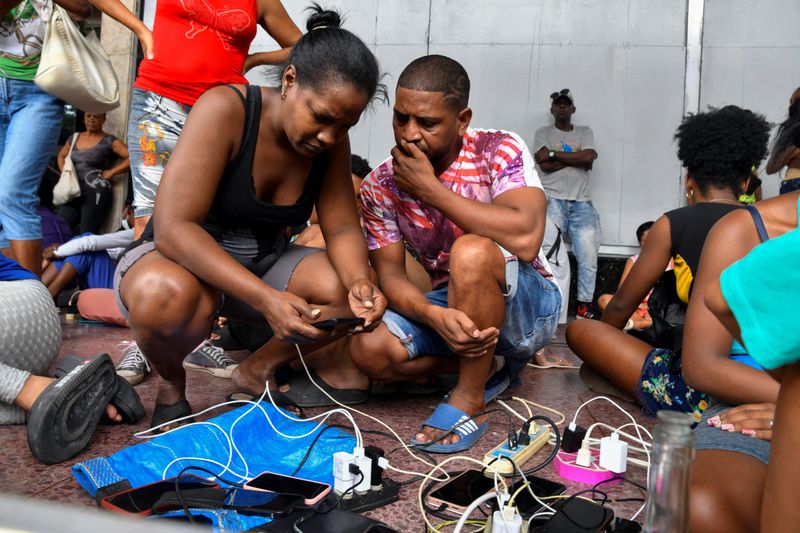Cuba slowly restores power after hurricane, Havana still dark
2024.11.07 22:15
By Dave Sherwood and Nelson Acosta
ARTEMISA, Cuba (Reuters) -Cuban authorities said they had begun restoring power to the eastern half of the island on Thursday, a day after Hurricane Rafael knocked out the country’s electrical grid, leaving 10 million people in the dark.
The grid collapsed on Wednesday as Rafael tore across Cuba with top winds of more than 115 mph (185 kph), damaging homes, uprooting trees and toppling telephone poles.
The hurricane had spun off westward into the Gulf of Mexico where it no longer posed an immediate threat to land, the Miami-based U.S. National Hurricane Center said.
Rafael was the latest blow to the Communist-run country’s already precarious electrical grid, which just two weeks ago collapsed multiple times, leaving many in the country without power for days and sparking scattered protests across the island.
The Energy and Mines Ministry said on Thursday afternoon it was making progress restoring power to pockets of central and eastern Cuba, but warned the process would be slower in western parts of the island, which were hardest hit by the storm.
Havana, the capital city of two million, was still without power late in the day on Thursday, and authorities had not said when it would be restored.
The country’s decrepit oil-fired generation plants have struggled to keep the lights on for decades, but this year the system collapsed into crisis as oil imports dropped off from allied countries Venezuela, Russia and Mexico.
Rafael was the second hurricane to hit the island in less than a month after Oscar ravaged eastern Cuba in October, a one-two punch that was sapping more resources in a country already suffering shortages of food, fuel and medicine.
Rolling blackouts lasting hours had become the norm across much of Cuba even before the two storms struck.
Skies had brightened across Havana by late in the day on Thursday. Road crews and residents worked to clear downed tree limbs, trash and debris that blocked many roadways, though most shops, banks and most state agencies remained closed.
More than 220,000 people were evacuated from low-lying and vulnerable areas, officials said, and most had returned to their homes on Thursday. No one died as a result of the storm.
Officials re-opened Havana’s airport at noon. Schools would stay closed until Monday (NASDAQ:), authorities said.
Rafael grazed the Cayman Islands as a Category 1 cyclone on the five-step Saffir-Simpson hurricane scale before increasing strength in less than 24 hours to the much more powerful Category 3 that made landfall on Cuba’s southwestern shore.
BREAD BASKET
Artemisa province, a farm province known as Havana’s bread basket, took the brunt of the impact from the hurricane. Violent winds flattened several high tension power lines along the region’s principal highway. Downed trees littered roadways in the provincial capital.
The storm tore across farm fields just as the winter planting season was getting under way, destroying thousands of hectares (acres) of banana plants, yucca, beans, corn and rice, according to agriculture officials.
Heavy winds and rain prompted authorities to protectively harvest ripening fruits and vegetables rather than take a total loss.
“You have to see it to believe it,” said Rosa Martinez, a 62-year-old resident of the nearby small town of Toledo.

She said food was already scarce and too expensive.
“If we were having trouble before, now its going to be even worse, that much I’m sure of.”








